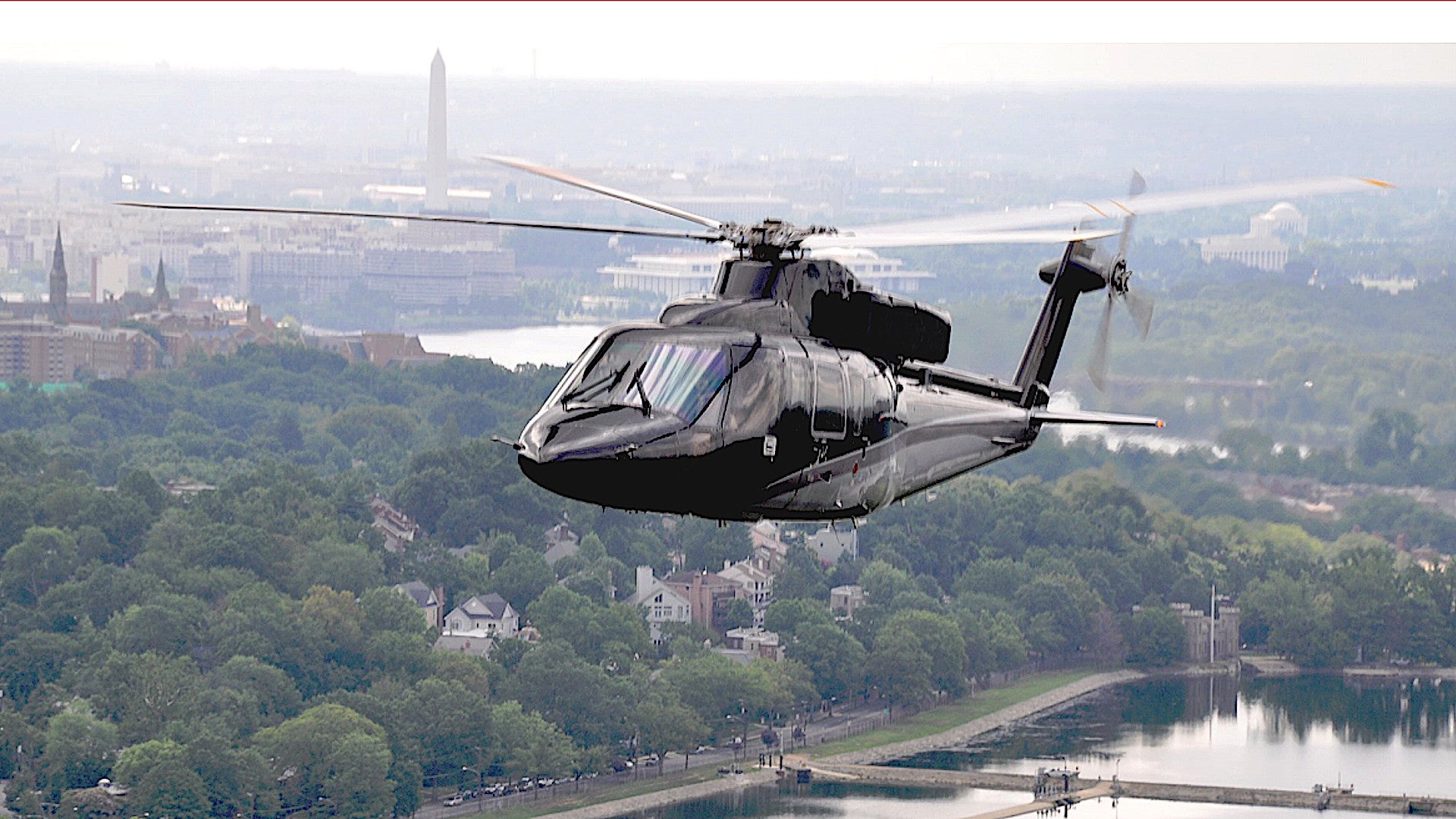U.S. Customs and Border Protection’s Air and Marine Operations division, or AMO, operates one the largest air arms of any U.S. federal government agency outside of the U.S. military, often going back and forth with State Department’s sprawling Air Wing for the top spot on that list. AMO has a diverse array of fixed-wing aircraft and helicopters, as well as Reaper drones, none of which are particularly difficult to find information about, with the curious exception of a small and mysterious fleet of three Sikorsky S-76B helicopters.
AMO, and Customs and Border Protection (CBP) as a whole, is extremely tight-lipped about the trio of S-76Bs. The Department of Homeland Security, of which CBP is a part, registered all three helicopters, which carry the U.S. civil registration codes N159CM, N269FL, and N844LC, in 2012, according to Federal Aviation Administration (FAA) records. They all wear a non-descript black-and-gray paint scheme that is distinct from other AMO aircraft and have no markings beyond their registrations.
Sikorsky first introduced the twin-engine S-76 line in the late 1970s and began producing the B variant in the late 1980s. The S-76B evolved from what the company had originally marketed as the S-76 Mk II, which featured more powerful engines along with improved avionics and other upgrades that gave it a true all-weather capability. All of AMO’s S-76Bs were made in 1987, the first year that variant came onto the market.
Newer models of the S-76 remain in production today and it has been a very successful product line for Sikorsky with more than 1,000 examples built in total to date. Variants are in service with militaries, law enforcement agencies, and commercial and civilian operators around the world. It is a top choice VIP transport duties, ranging from business executives and celebrities to heads of state even royalty. The Queen’s Helicopter Flight, which serves Queen Elizabeth II and other members of the British Royal Family, notably has a custom S-76C++ variant. Kobe Bryant, his daughter Gianna, and seven others were also flying in an S-76B when it crashed earlier this year, tragically killing all of those on board.
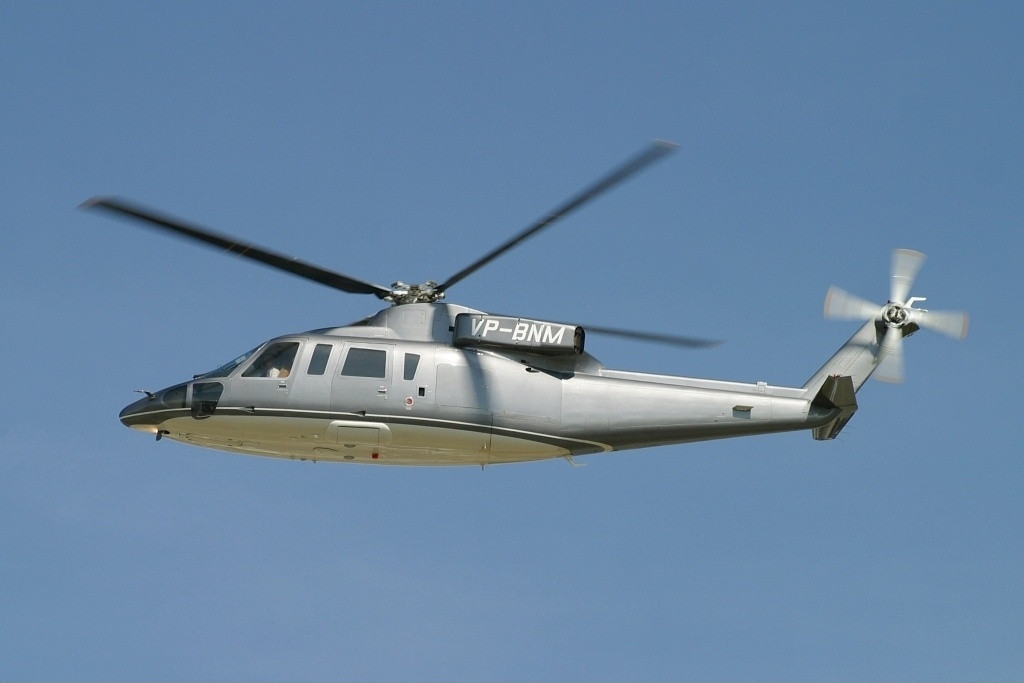
AMO’s “Sikorsky S-76 helicopters are a medium-range, tactical apprehension aircraft used by CBP’s Air and Marine Operations (AMO) to protect the American public from threats of terrorism and drug smuggling, and to enforce airspace security over critical venues,” CBP’s brief official fact sheet on the helicopters says. “They are medium lift utility helicopters, which can carry multiple personnel and equipment for various law enforcement operations without sacrificing range or speed.”
This is similar to how CBP describes the functions of AMO’s Sikorsky UH-60 Black Hawks and Bell UH-1N Twin Hueys. The “medium-range” descriptor separates all of these helicopters from the rest of its rotary wing fleets, which also include shorter-range Airbus AS350 A-Star, Airbus EC120, and Bell Huey II helicopters.

However, the “tactical apprehension aircraft” description is immediately curious. The S-76Bs notably lack any visible sensor turrets with visual and infrared video cameras or spotlights, which are common features on helicopters tasked with “tactical” law enforcement missions across the United States and elsewhere in the world, including AMO’s own UH-60s and UH-1Ns.
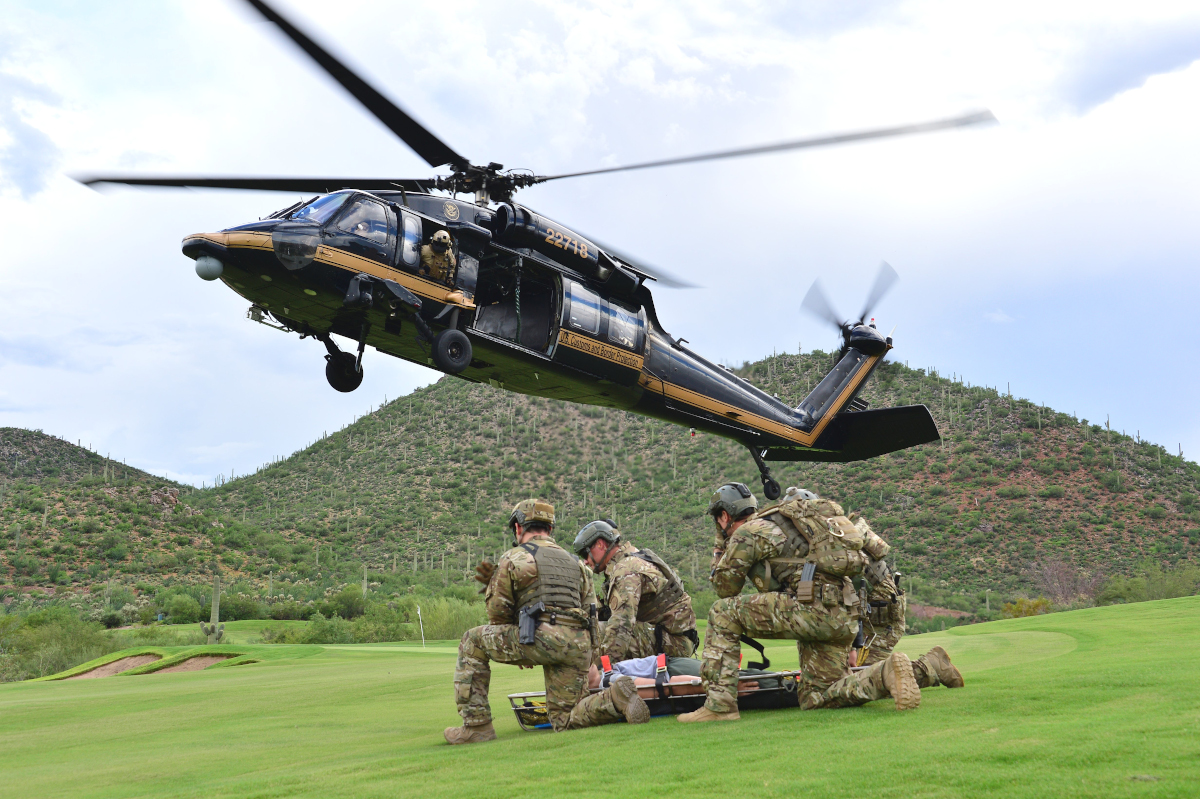
The S-76Bs do have a number of non-standard antennas, typically associated with high-frequency radios and other communications systems, on top of and below their tail booms. In 2017, Rotor and Wing International magazine published an interview with CBP Air Interdiction Agent Will Suggs, which included a picture of him standing next to one of the S-76Bs. That piece noted that “Suggs is also a technical communications officer.”
CBP’s own fact sheet for S-76B lists satellite communications capabilities, as well as night-vision capable cockpits, and the ability to seat eight passengers, as the helicopter’s notable features.
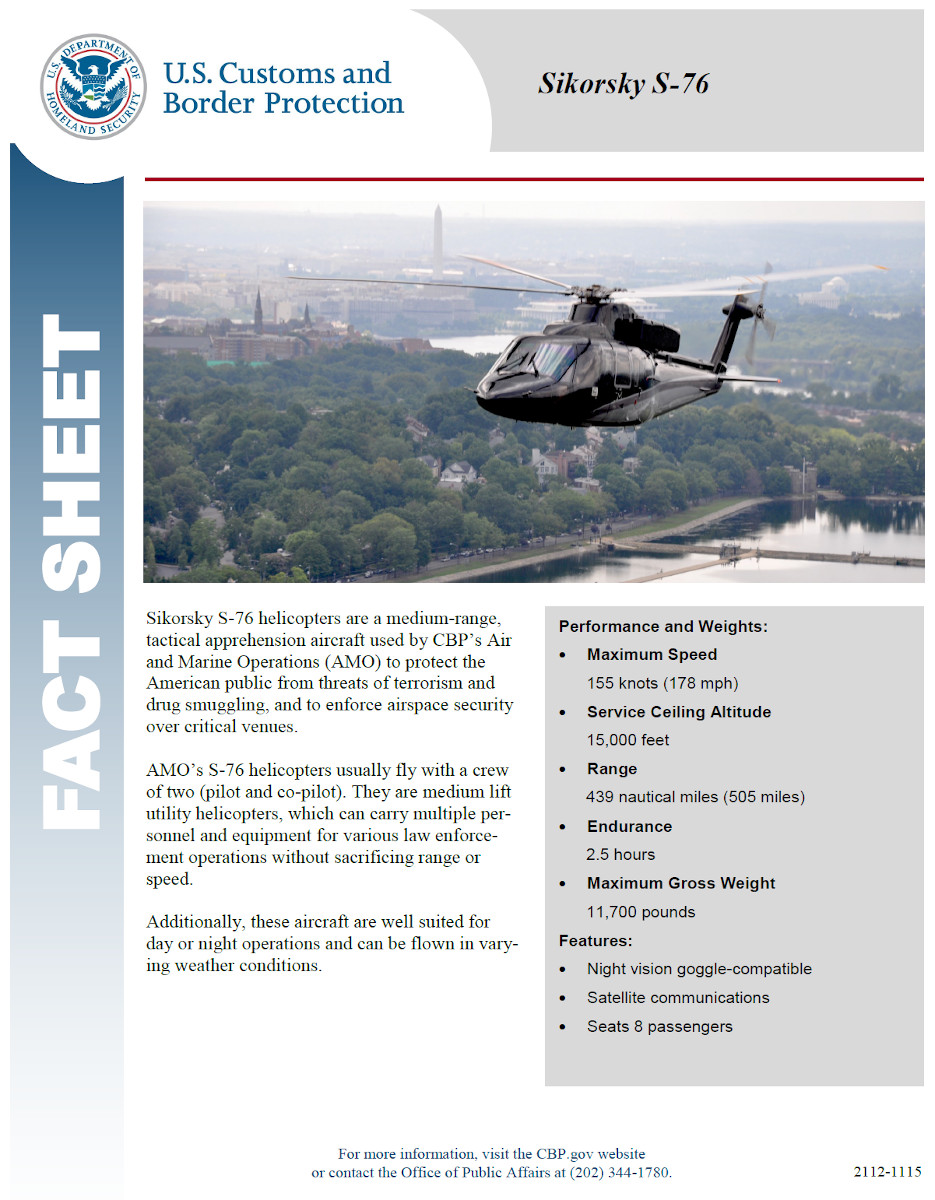
Pictures of all three of the helicopters also show what appears to be tinted cabin windows and at least one picture of N269FL is available showing interior shades inside the main cabin. All of these features are more indicative of what one might expect to see on a helicopter tasked with a VIP transport or another form of specialized support mission.
CBP’s public affairs office declined multiple opportunities to offer more specific details on the roles and missions of AMO’s S-76Bs beyond what is in the fact sheet online. “AMO often conducts contingency operations and national taskings, including disaster relief, humanitarian efforts, and high profile security events, therefore there can be a multitude of “secondary missions” outside the scope of border security,” a spokesperson for the agency told The War Zone broadly in response to questions about these particular helicopters.
A VIP airlift or otherwise niche mission set would fit with the fact that all of S-76Bs are presently assigned to AMO’s National Capital Region Air Branch, also referred to as the Manassas Air Branch, which is headquartered at Manassas Regional Airport in the Virginia city of the same name. The airport is situated just shy of 30 miles southwest of downtown Washington, D.C. As of 2017, the branch also managed geographically separate detachments in Plattsburgh and New York City in New York state, as well as Houlton, Maine.
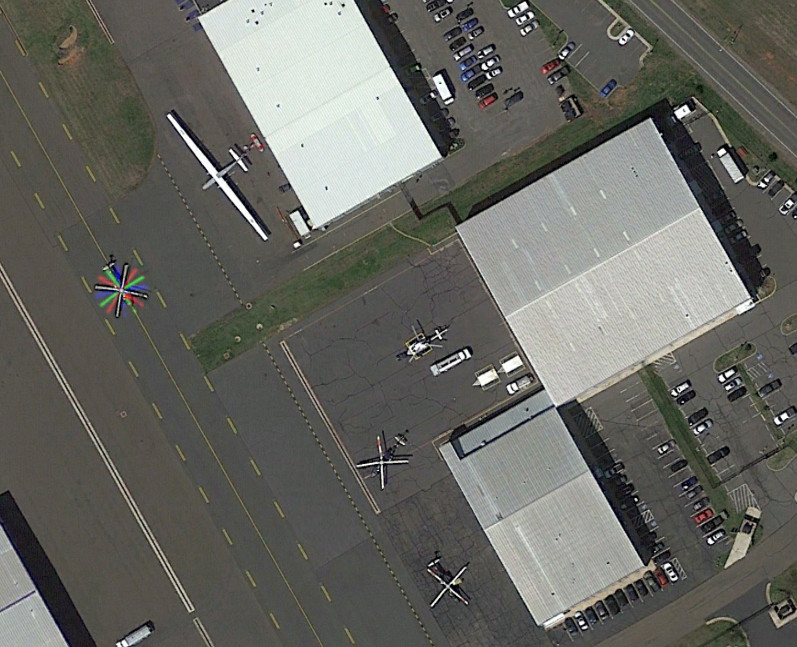
“The Manassas Air Branch conducts security missions for events designated as National Special Security Events or given Special Event Assessment Ratings,” according to CBP’s website. “It is also responsible for conducting airborne surveillance missions for federal, state, and local law enforcement agencies.”
The U.S. federal government generally routinely designates any major national-level gathering that could present an attractive target for terrorists or other nefarious actors as a National Special Security Event or otherwise gives it a Special Event Assessment Rating. These range from major government gatherings, such as State of the Union addresses, to the conventions the Republican and Democratic Parties hold during presidential election years, to national championship sporting events, such as the Super Bowl. The associated security assessments support subsequent planning for those events, which would include the positioning of fixed-wing aircraft and helicopters, along with quick reaction teams, to respond to any crisis and potentially secure and extract VIPs from harm’s way.
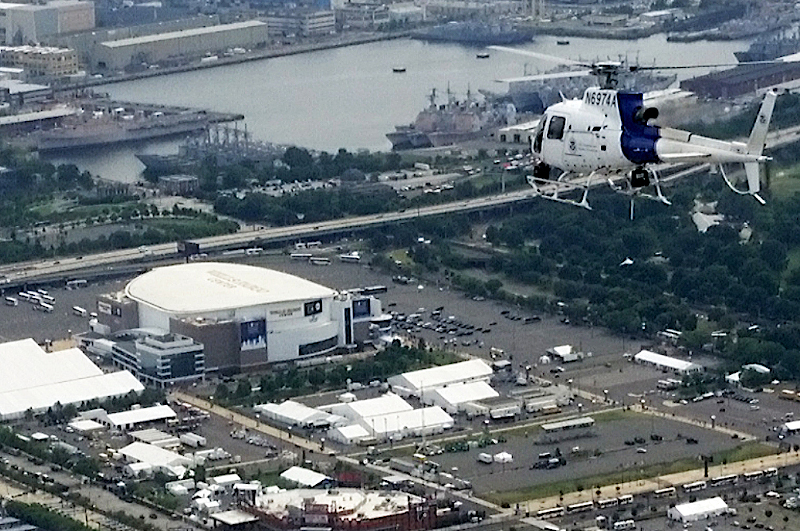
In 2015, the CBP S-76Bs with the registrations N159CM and N844LC were both spotted at Wings Field in Whitpain Township, Pennsylvania, which is situated some 15 miles northwest of Philidelphia, during Pope Francis’ visit to the latter city. The Papal visit certainly meets the definition of an event that would have gotten a Special Event Assessment Rating.
There are also indications that the S-76Bs fly general patrols or other routine flights in the airspace over and around Washington, D.C. Steve Trimble, Aviation Week‘s Defense Editor and good friend of The War Zone, spotted N844LC orbiting for a period in Northern Virginia using online flight tracking software earlier this month.
“It would not be irregular to see an AMO aircraft operating in the National Capital Region, likely originating from the Manassas Air Branch, as that is well within Manassas’ area of operations,” CBP’s spokesperson told The War Zone in regards to this specific flight. “AMO cannot provide details on the specific flight mentioned, as our aircrews frequently conduct missions in conjunction with federal, state, local, and tribal partners, and specific details are law enforcement sensitive.”
Given the National Capital Region Air Branch’s “airborne surveillance mission,” it is also possible that the S-76Bs have some form of covert surveillance capability, such as carrying devices that mimic cell phone towers that can then, depending on the particular model, geo-locate an individual by way of their phone signal or even collect metadata or audio from calls. These devices are commonly called “dirtboxes” or “stingrays,” references to manufacturer DRT and a brand of products from L3Harris, respectively, and CBP is known to employ them.
At the same time, at least one AS350 helicopter is permanently assigned to the National Capital Region Air Branch and other AMO helicopters with overt aerial surveillance capabilities are known to operate in the greater Washington, D.C. area, as well as the other areas of the country that are within the branch’s broader area of responsibility and that of its separate detachments. It seems most likely that the S-76Bs are primarily used on a day-to-day basis for ferrying VIPs from the CBP, and the Department of Homeland Security, as a whole, as well as important visitors to any federal agencies, around the Washington, D.C. area, while also being able to fly limited surveillance missions in a secondary capacity.
The S-76Bs may also have a role in just ferrying VIPs from within CBP, and the Department of Homeland Security, as a whole, as well as important visitors to any federal agencies, around the Washington, D.C. area. These helicopters could also be integrated on some level into the U.S. government’s “continuity of government” plans, which include procedures for spiriting senior officials away to austere and hardened command and control facilities, often located deep underground, so they can continue to perform essential tasks during major crises. There are a number of U.S. military helicopter units in and around the nation’s capital, which you can read about in more detail in this past War Zone piece, which are tasked with these types of missions.
Whatever the case, CBP’s three S-76Bs are certainly an intriguing, if oddly murky component of the agency’s aviation capabilities. Their unmarked paint schemes and vague disclosed mission set only add to the mystery surrounding the trio of unique airframes.
Contact the author: joe@thedrive.com
